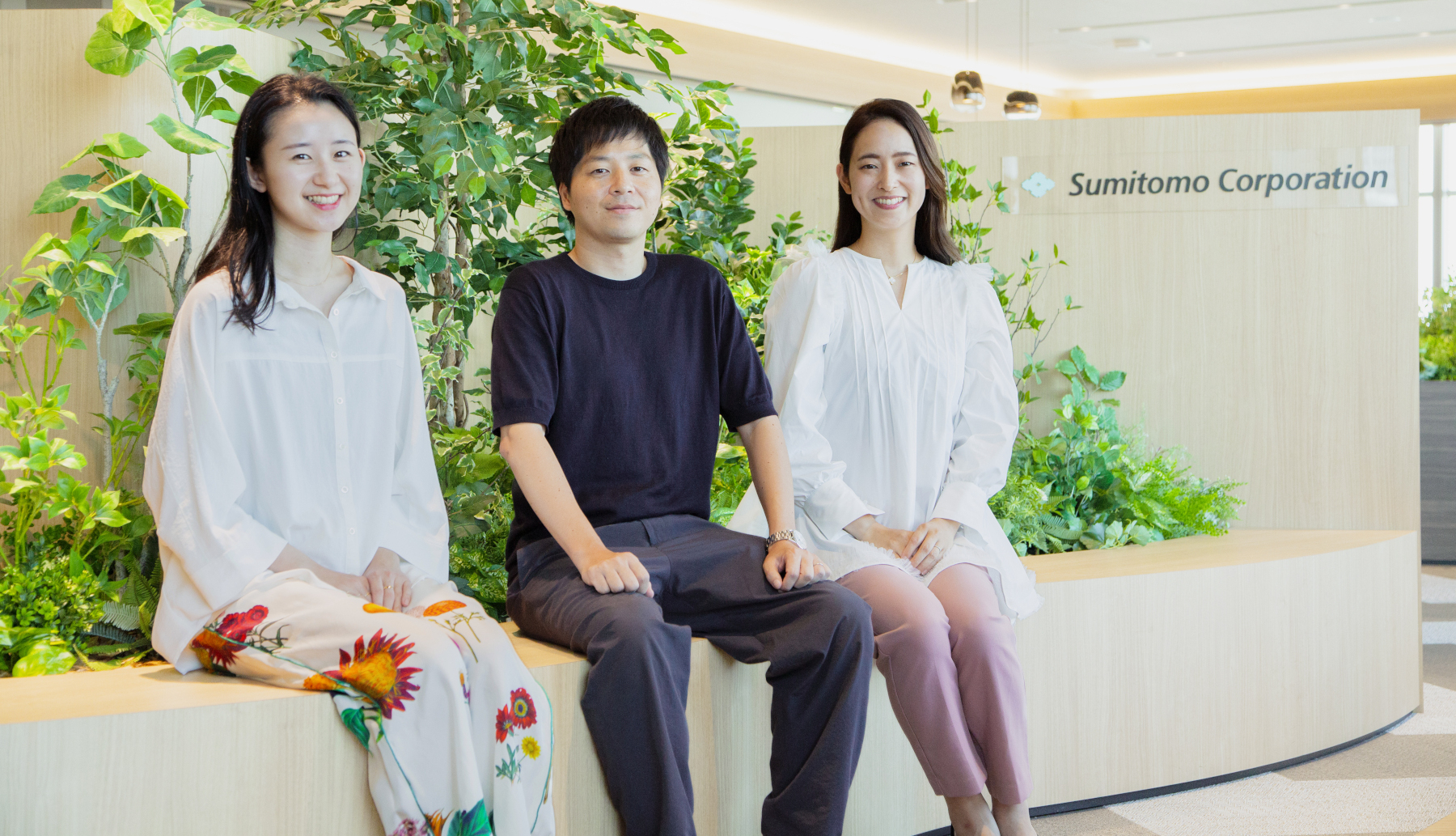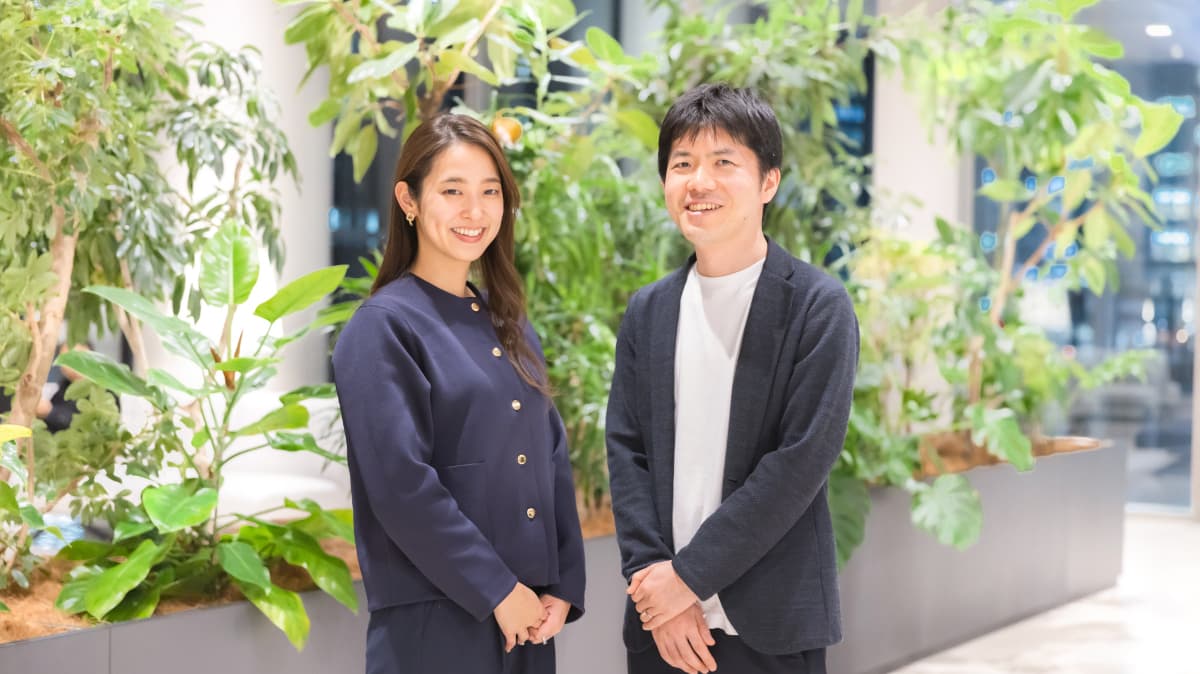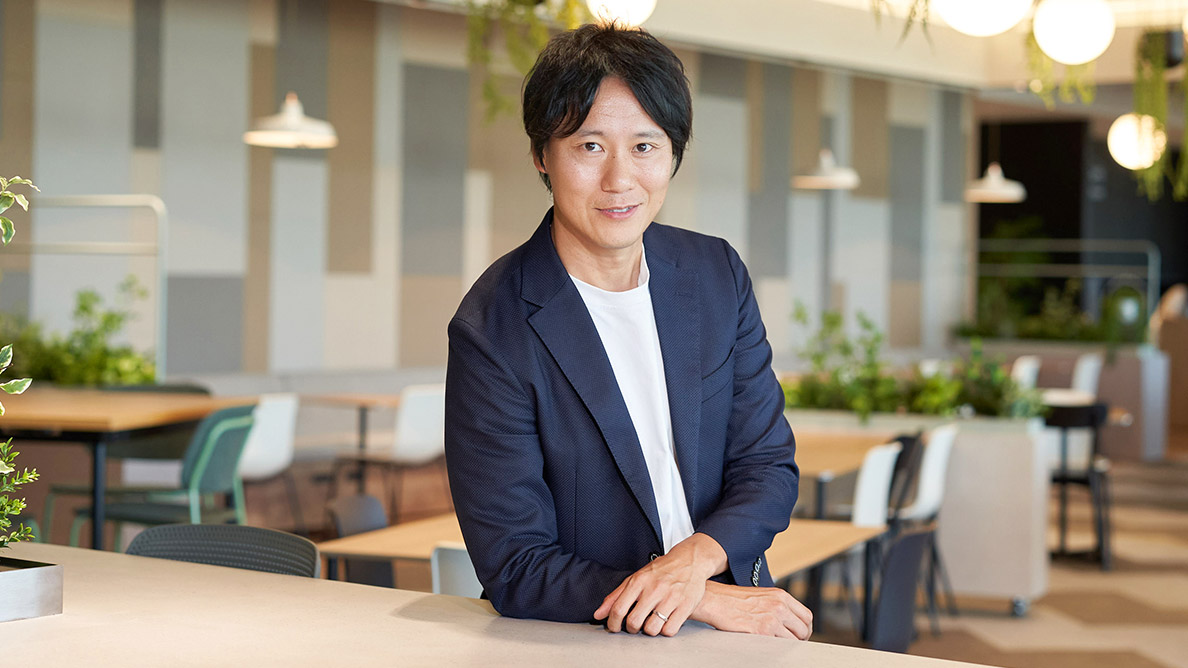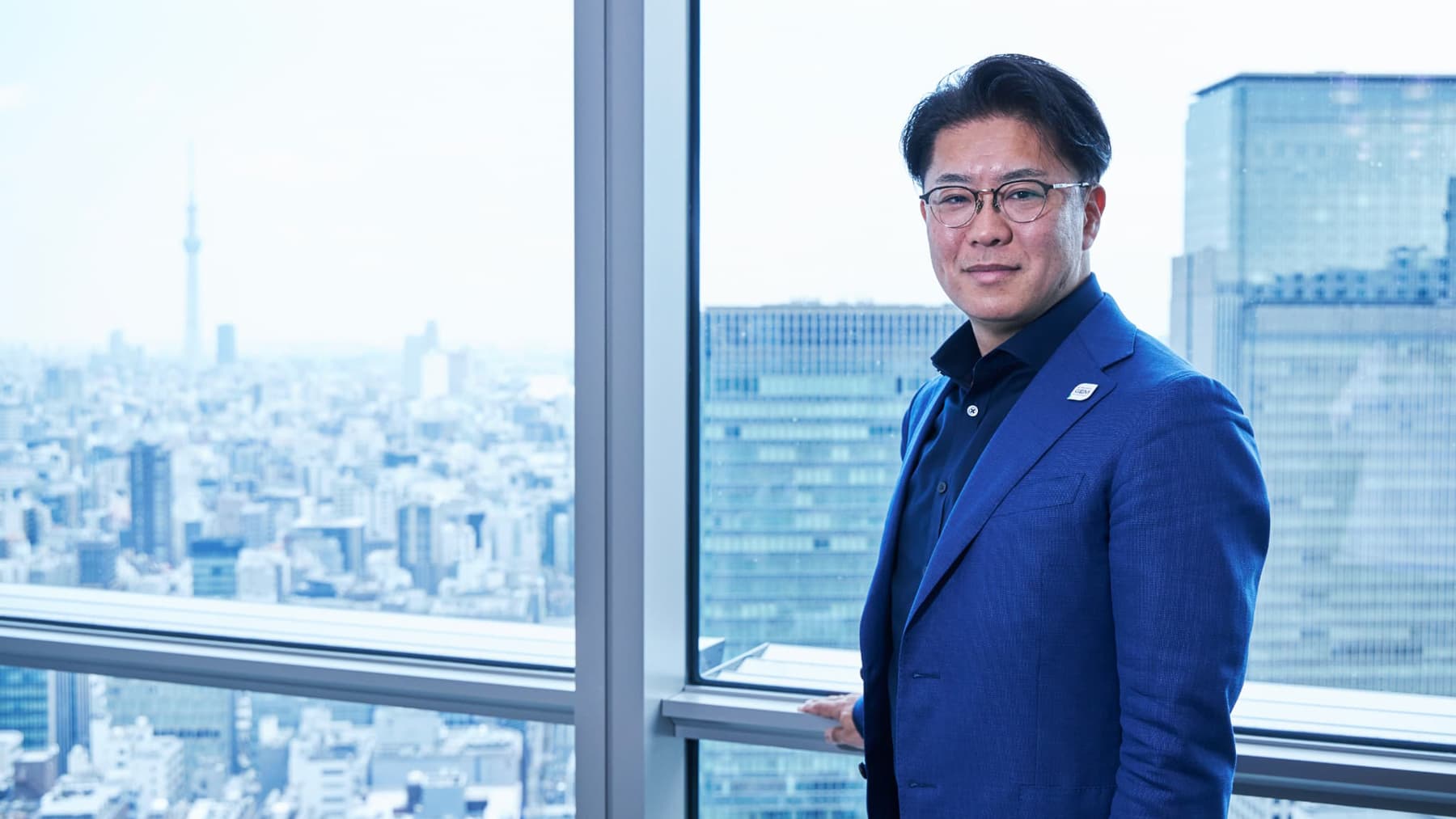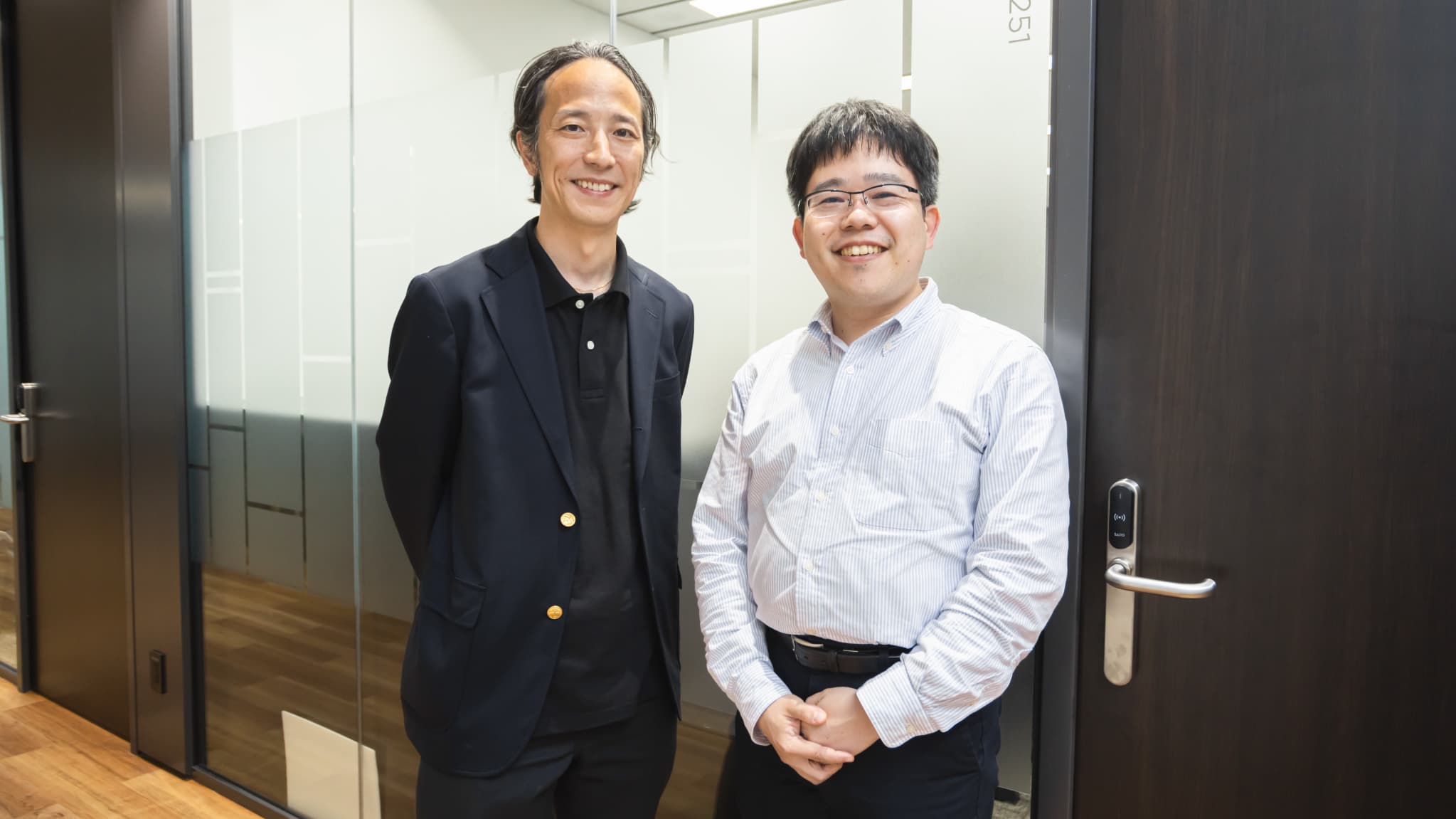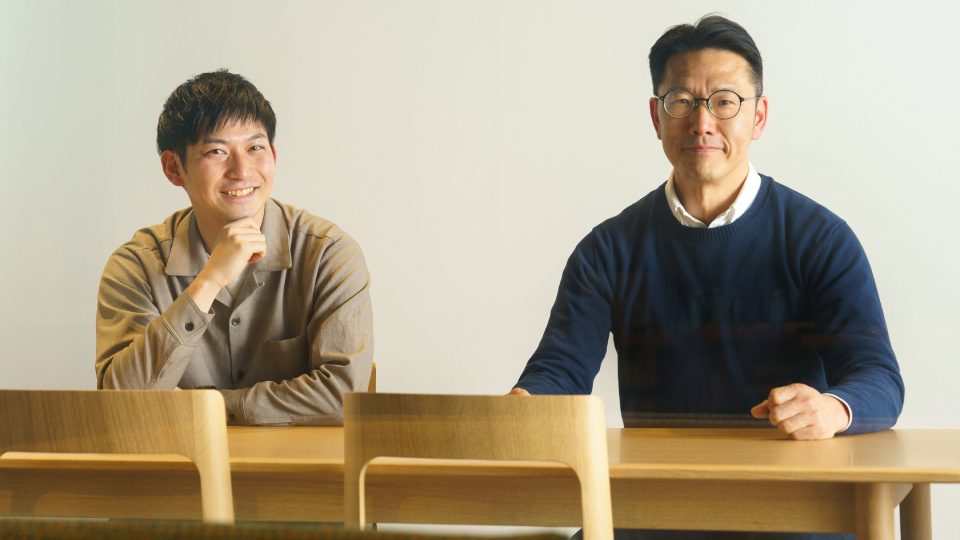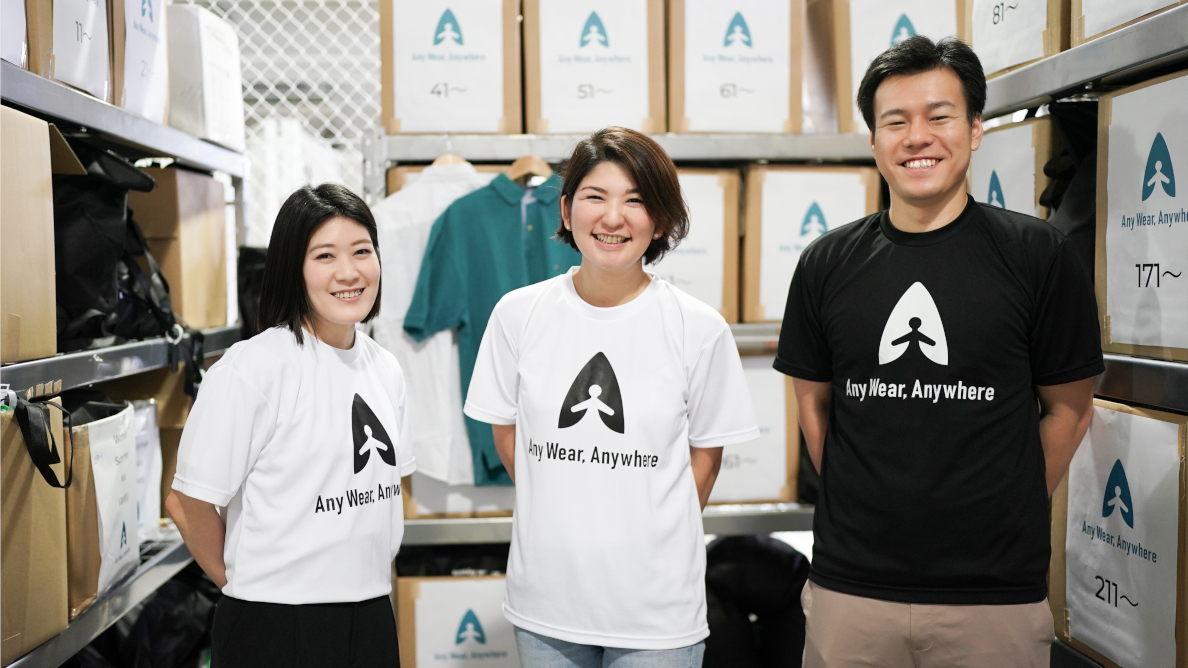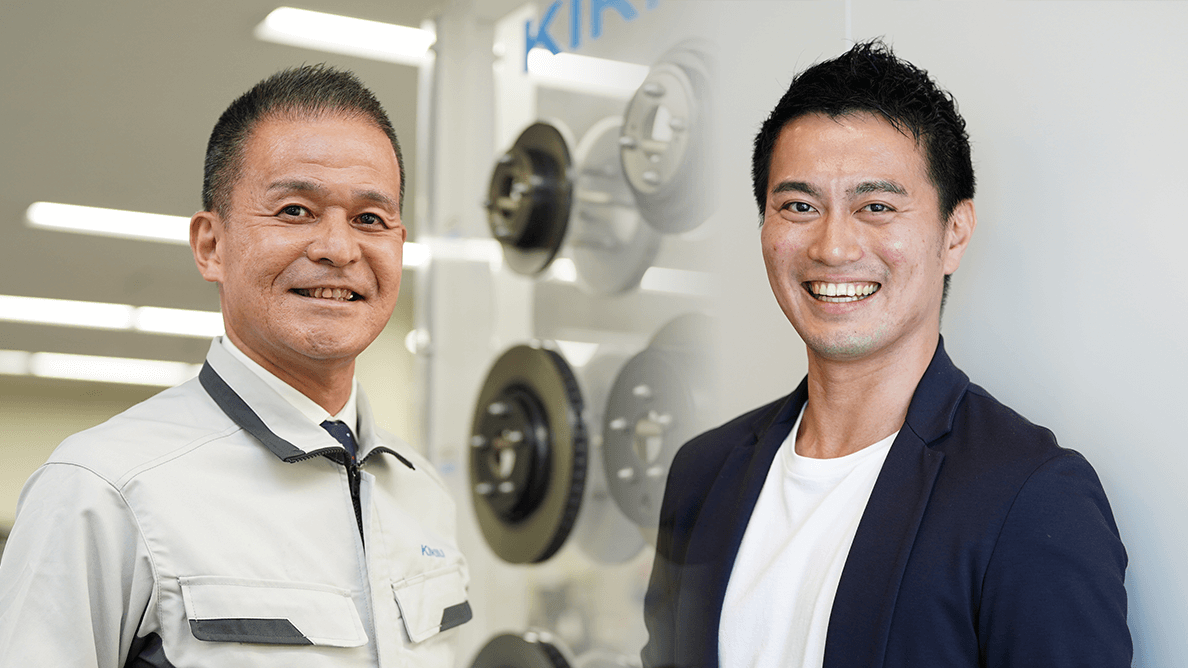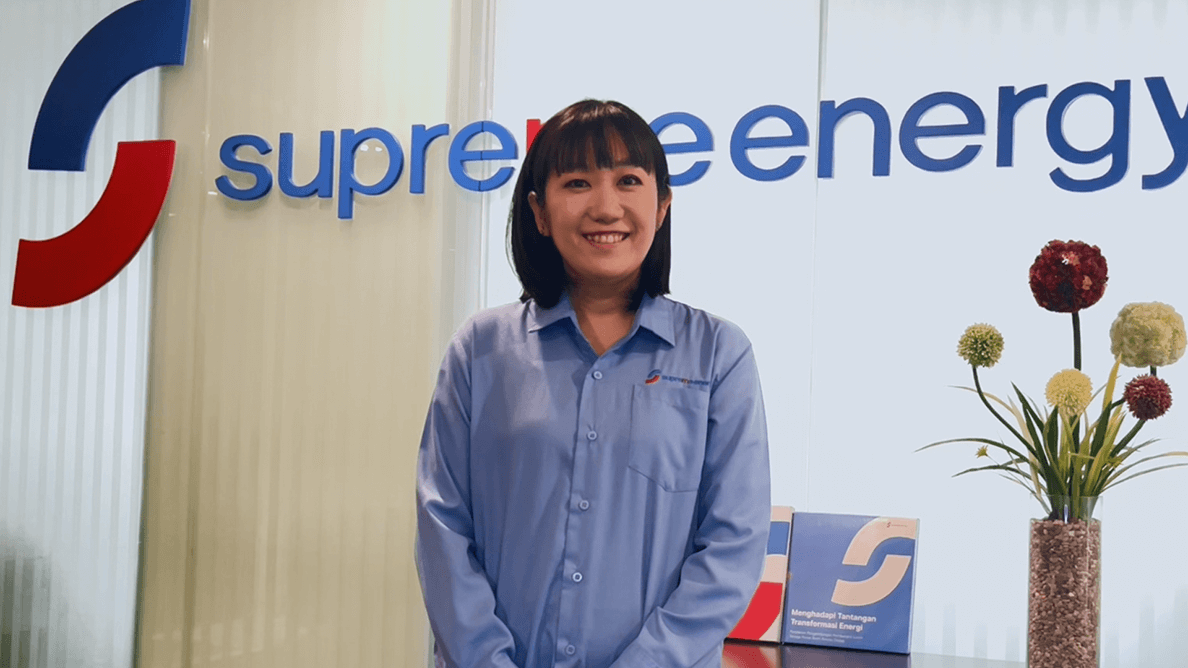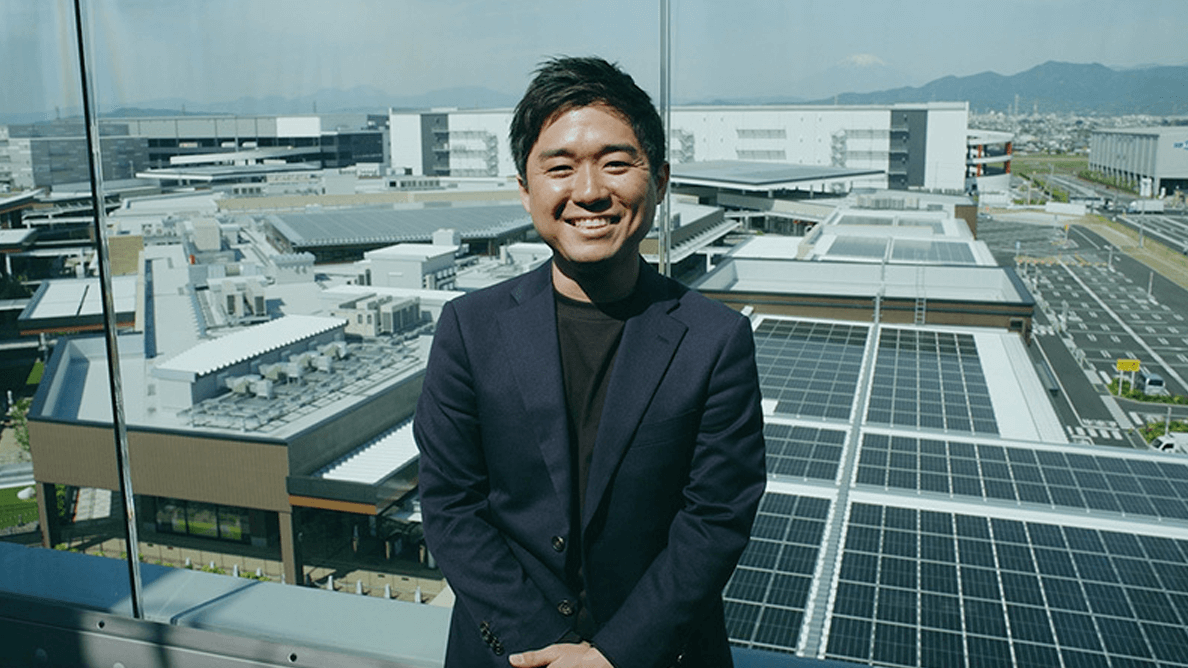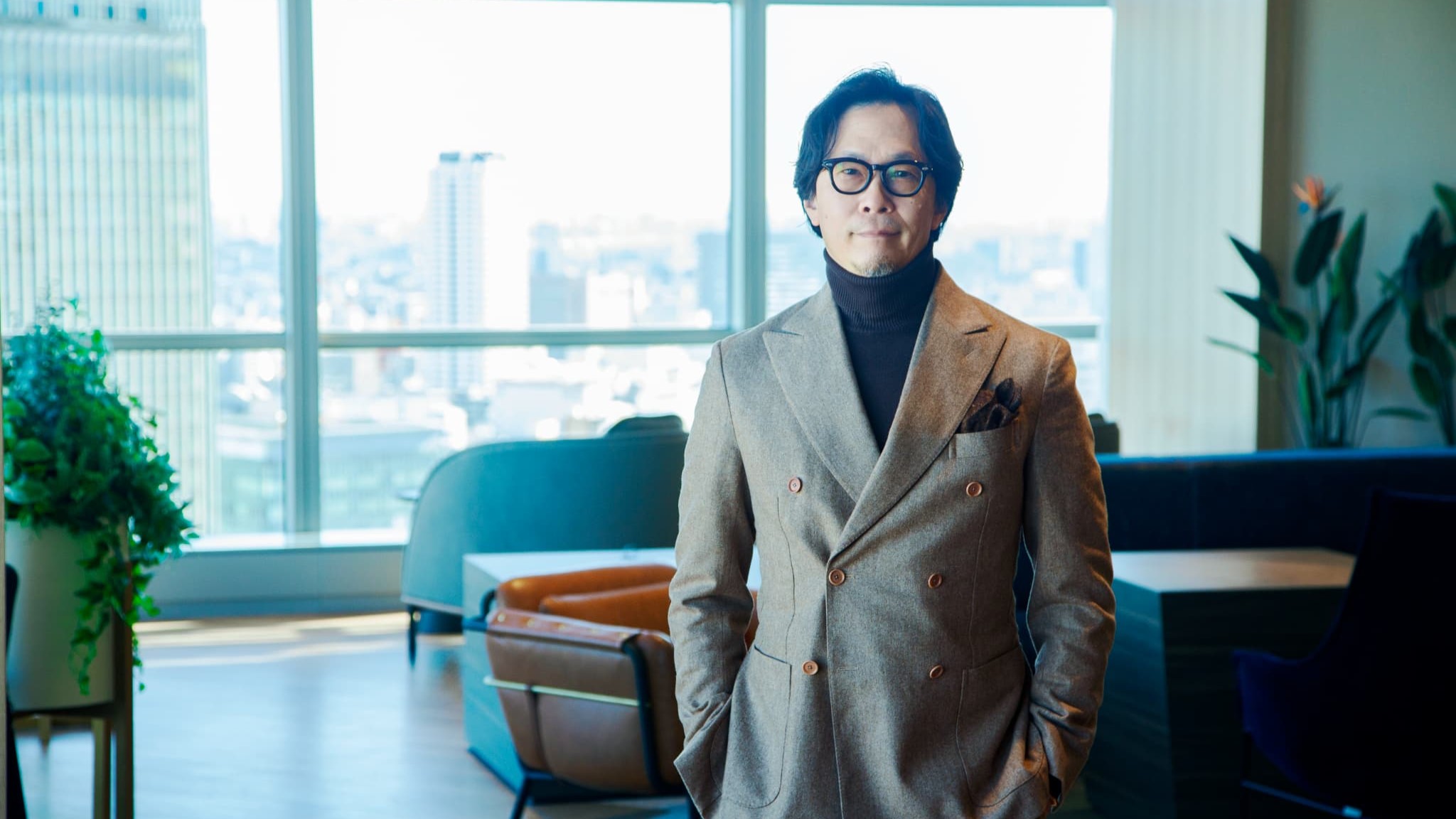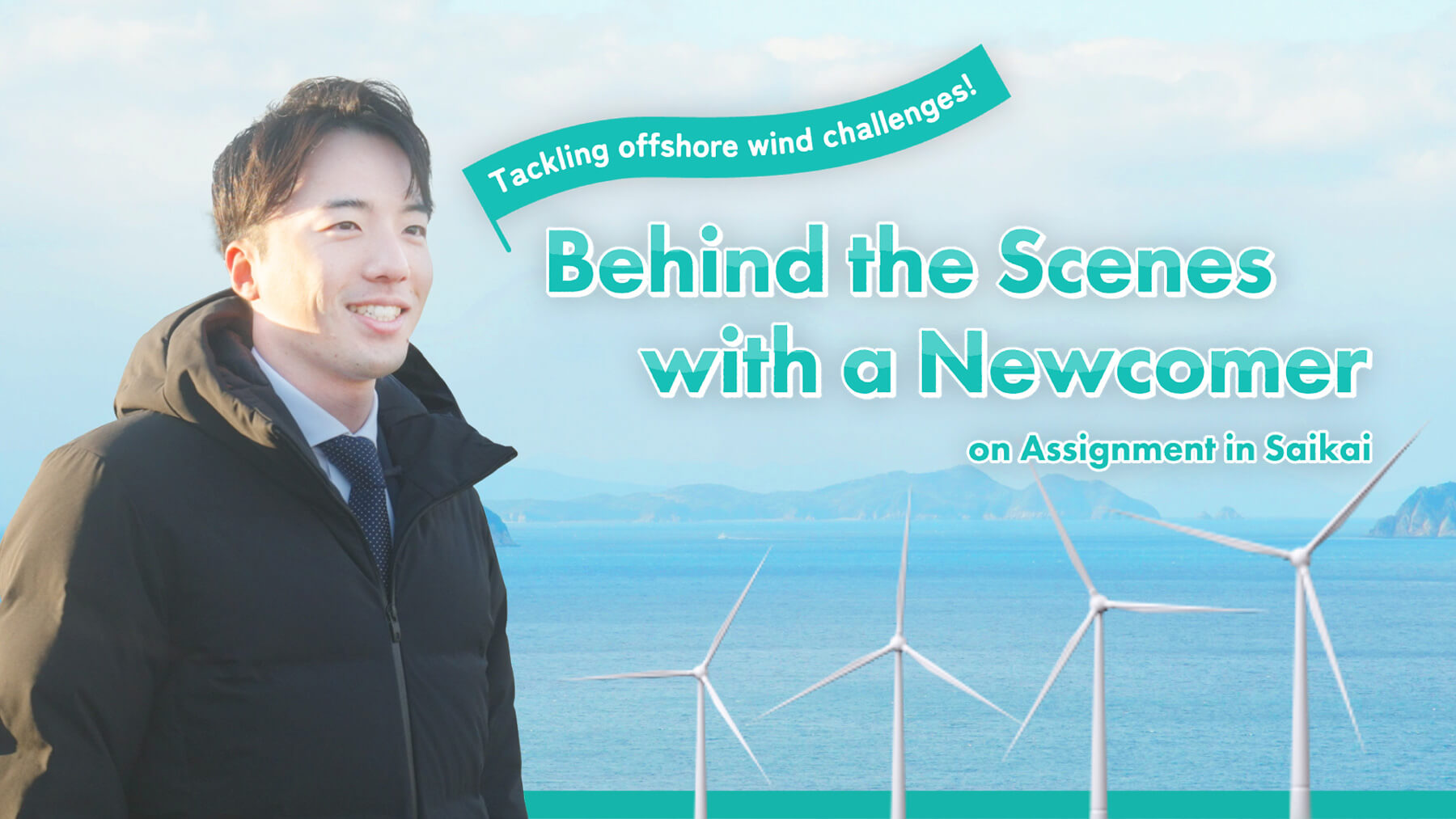
- TOP
- Enriching+TOP
- Seasoned Recruit Launches New Firm Within One Year, Creating Hakobune — A New EV Business Model.
2024.1.19
Culture
Seasoned Recruit Launches New Firm Within One Year, Creating Hakobune — A New EV Business Model.
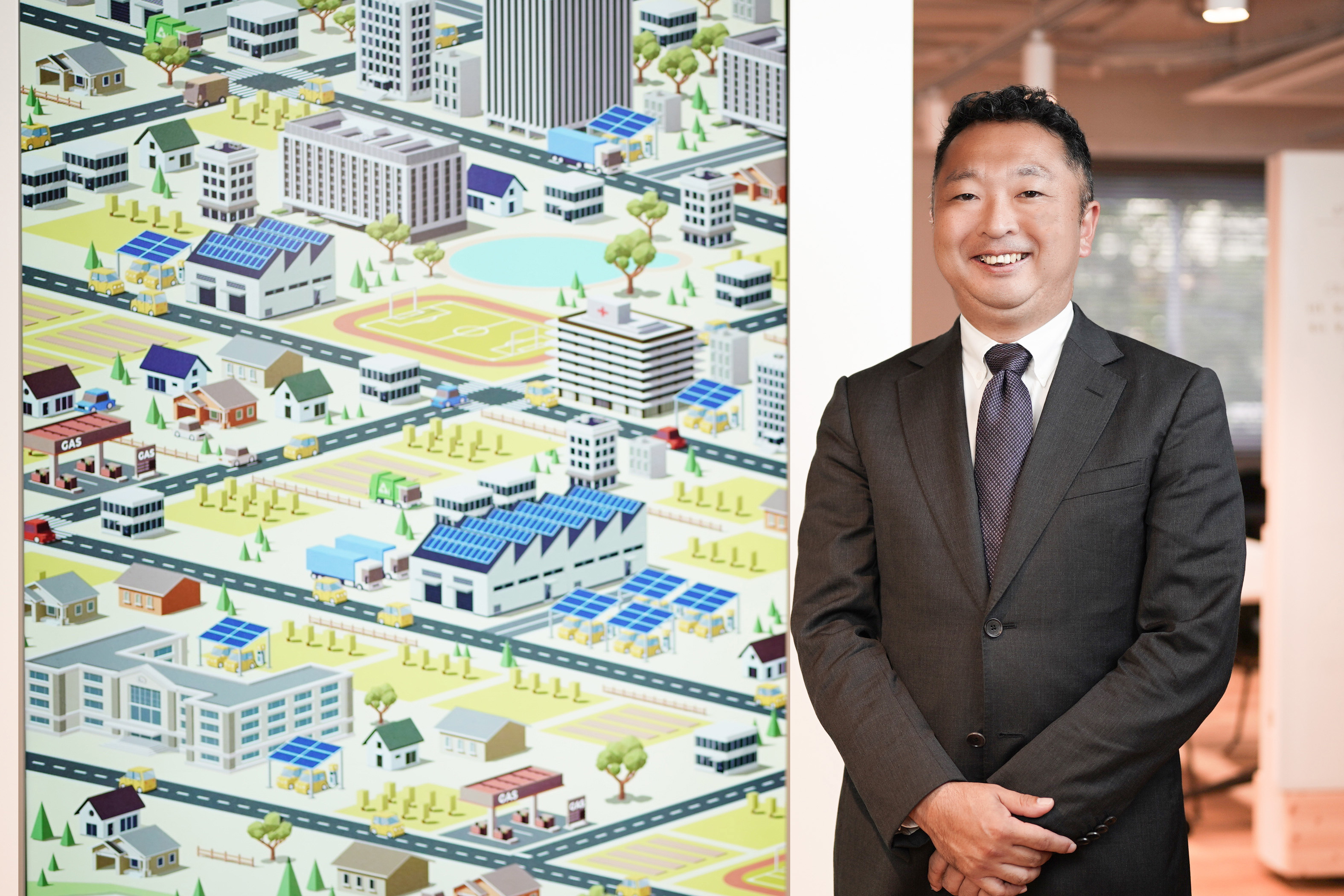
Hakobune is a one-stop service providing multiple benefits: a subscription service for shared (corporate/employee) commuter EVs, workplace charging (WPC) using renewable energy, and V2X (“vehicle-to-X”) technology connecting cars with just about anything. Masanori Takahashi, the project’s driving force, established Hakobune within a year of joining Sumitomo Corporation as amid-career employee. The project’s drawing cards — targeting a decarbonized society and brainstorming appealing recruitment — have resulted in nonstop inquiries from small- and medium-sized companies across Japan. Today, we discover more about the launch of this company which envisions a comfortable and convenient lifestyle with EVs transporting electricity as well as individuals throughout communities.
*Affiliations and interview content are correct at the time of the interview.
-

President and CEO, Hakobune, Inc.Masanori Takahashi
Takahashi joined Sumitomo Corporation in May 2022 following a 23-year career with a major automobile manufacturer. The following April, Takashi leveraged his career experience in areas such as mobility services to launch Hakobune, which offers commuter EV subscriptions, workplace charging (WPC), and V2X connectivity. Takahashi’s experience in establishing new businesses has helped instill a new culture at Sumitomo Corporation. In-house, the CEO is known as “Masa-san,” thanks to the company’s flat organizational structure.

Hakobune Nomenclature Inspired by Noah’s Ark
Let’s begin with an overview of Hakobune’s services and key characteristics.
Hakobune offers multiple services: commuter EV subscriptions, workplace charging (WPC) using renewable energy, and V2X technology enabling home use of vehicle-generated electricity. At present, Japan is reported to have some 25 million private commuter vehicles. Redefining commuting to include car-sharing between company and employee ultimately benefits the individual, the enterprise, and society. This initiative is significant in terms of decarbonization, given that over a third of Japan’s 82 million vehicles are used for commuting.
Issues including concern over cruising range and inadequate charging infrastructure have slowed the expansion of EVs in Japan. However, as the average commuting distance is 30km, an EV with a cruising range of 150km would only need to be charged once a week. As private vehicles used for commuting are usually active only in the morning and evening, use is both regular and uniform.
Conversely, as such cars are left standing in the workplace parking lot all day, they can become “batteries on wheels”, fully charged by the end of the workday, free to serve the user in his or her daily life once they are driven home. In other words, as long as there is a charging facility at the workplace, there is no need to install one at the commuter’s condominium or apartment complex.
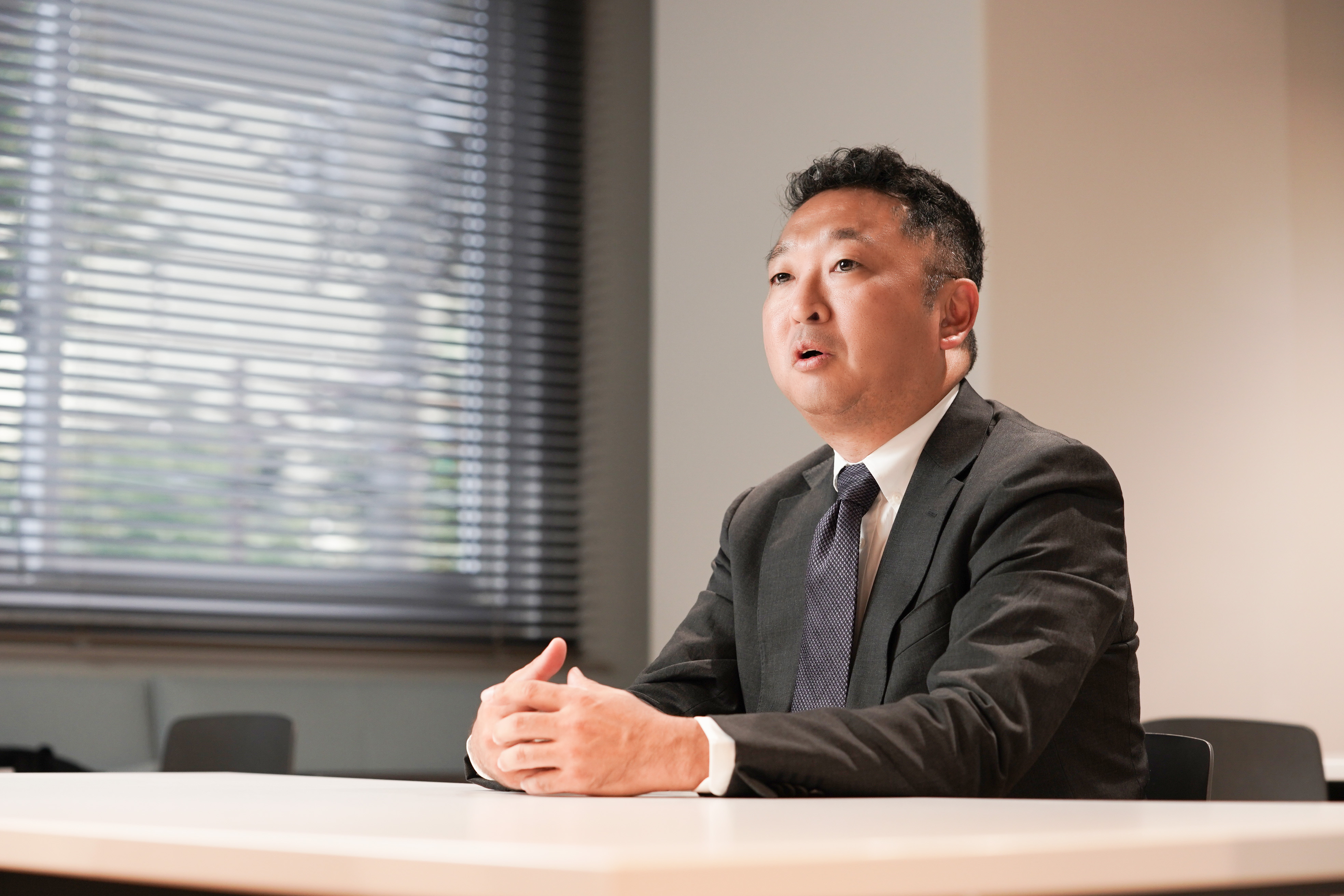
Hakobune contributes to individuals and society with novel ideas, but how did it get that unique company name?
The name was borrowed from the biblical story of Noah’s Ark, as “Hakobune” literally means “box-like vessel.” The Bible notes that Noah’s ark was built in anticipation of a great future flood. Hakobune was named in hopes that it can similarly help the automobile industry, which is undergoing massive change typically seen once in a century. The name is also a play on words, as we hope the EVs can help transport (hakobu in Japanese) electricity throughout communities.

Welcoming a New Challenge Inspired by Takahashi’s Son
What prompted you to seek a new challenge at Sumitomo Corporation following your career at an automobile manufacturer?
I began working for a major auto manufacturer after graduation, gaining experience in areas such as advertising, dealer consultancy, and medium-term management planning before launching the EV car-sharing business.
One watershed was the birth of my son when I turned 40. After observing him learn by trial and error, I began to wonder whether I was satisfied with my own life as it was. I realized I needed to rethink my own habit of setting personal limits and hitting the brakes when things didn’t go as planned. I was exactly 60 years old when my son turned 20, and I realized that I wanted to spend each day growing and learning alongside him.
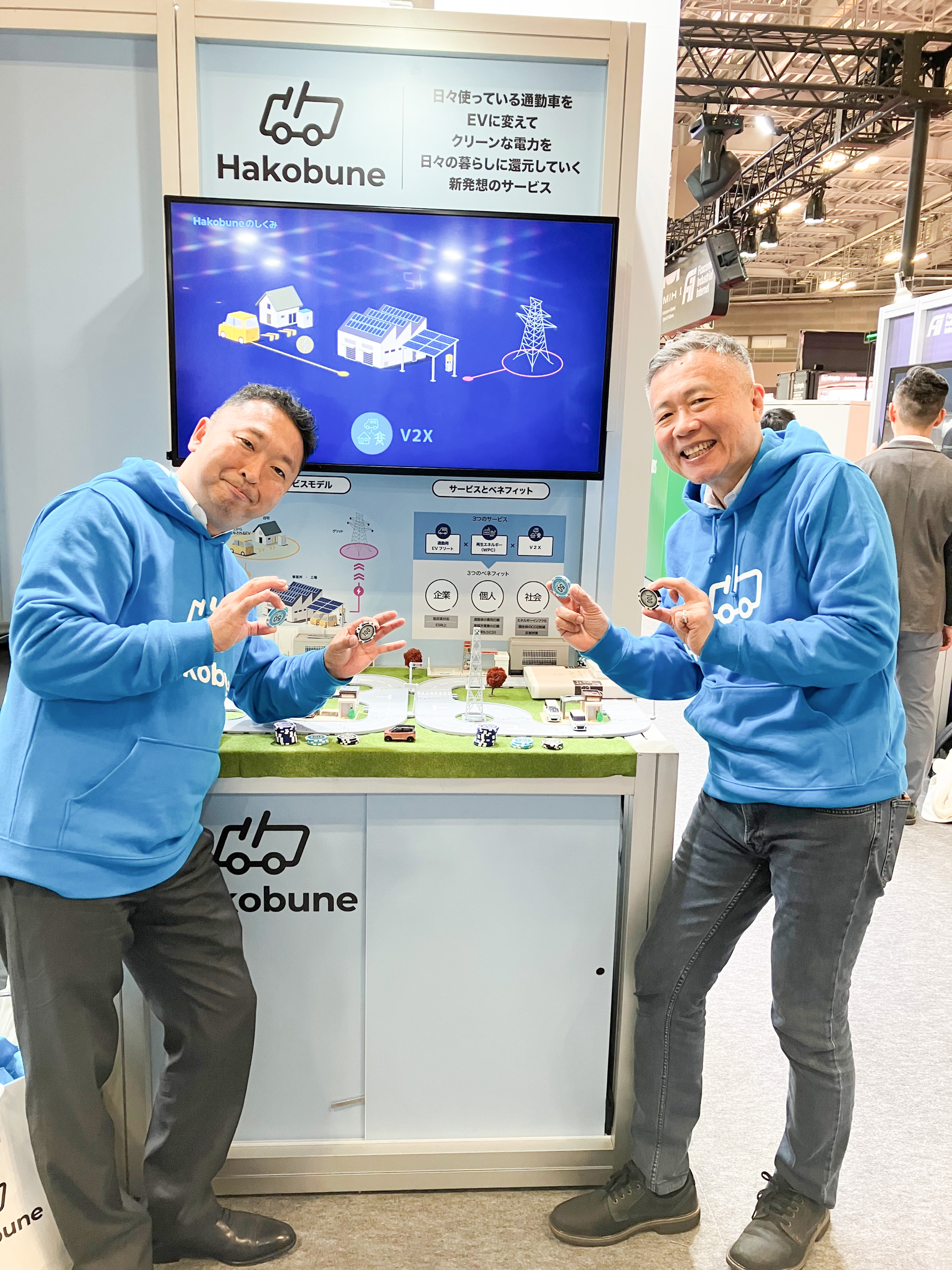
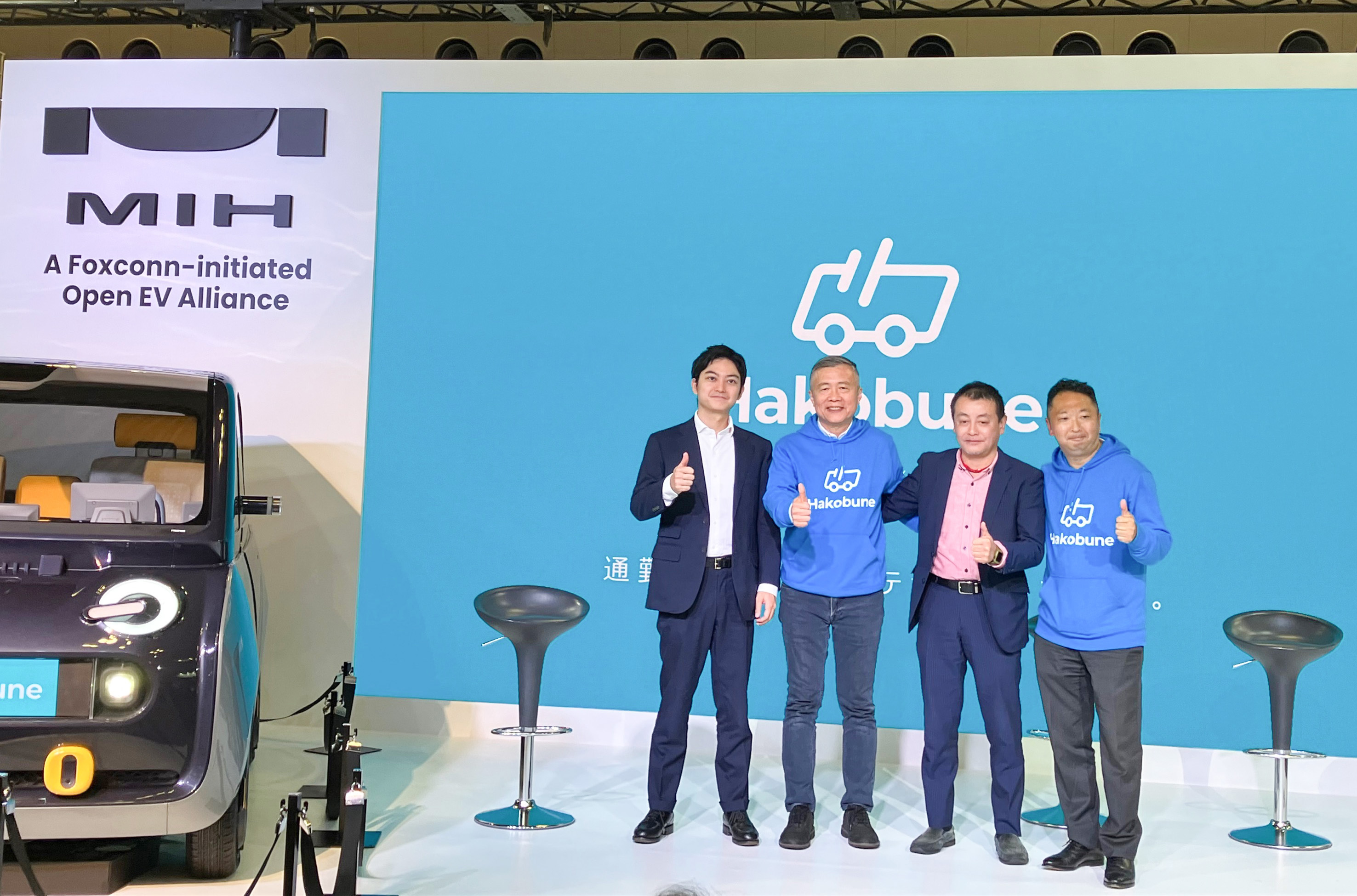
My position at the time was at the department-managerial level, where I was assigned significant and stimulating work with potential for further advancement. Nevertheless, I had the intense wish to step out of my comfort zone, sacrifice that work-related security, and start over with a fresh challenge.
With fortuitous timing, I heard that Sumitomo Corporation was intent on hiring a seasoned veteran. I had worked with integrated trading and business investment companies before, but Sumitomo Corporation employees had always impressed me as being especially warm. Although I was an outsider, they treated me as one of their own, sparking my wish to join the company, and my pursuit of that mid-career employment opportunity.
Commitment and Action: Sumitomo Corporation’s “Can-Do” Spirit
What is the driving force behind Hakobune, a company you established in less than a year after joining Sumitomo Corpration?
Many people showed support for the launch of a new venture like Hakobune, but due consideration was given as to whether it should be an independent company or a department within Sumitomo Corporation. I was not fixated on creating a new company, as I knew that creating a dedicated team worked better in some cases. However, functioning within an existing company and juggling other business interests would inevitably require prioritization. Shaping markets and society requires an unwavering commitment. In the past, smartphones and EVs were not ubiquitous parts of our lives as they are now. That led me to believe that Hakobune absolutely needed to be independent and backed by a blind faith in its power to break through. After making that decision, I felt the path to success lay in finding people within Sumitomo Corporation who shared its vision as well as communicating the farsighted perspective of the plan and its extensive social impact.
While I ostensibly took the lead and worked to get the company on its feet, I honestly do not for a moment believe that I alone created the business. Our success in pulling off the impossible feat of creating the company in such a short time is entirely due to the full-time employees and mid-career hires who shared the Hakobune philosophy.
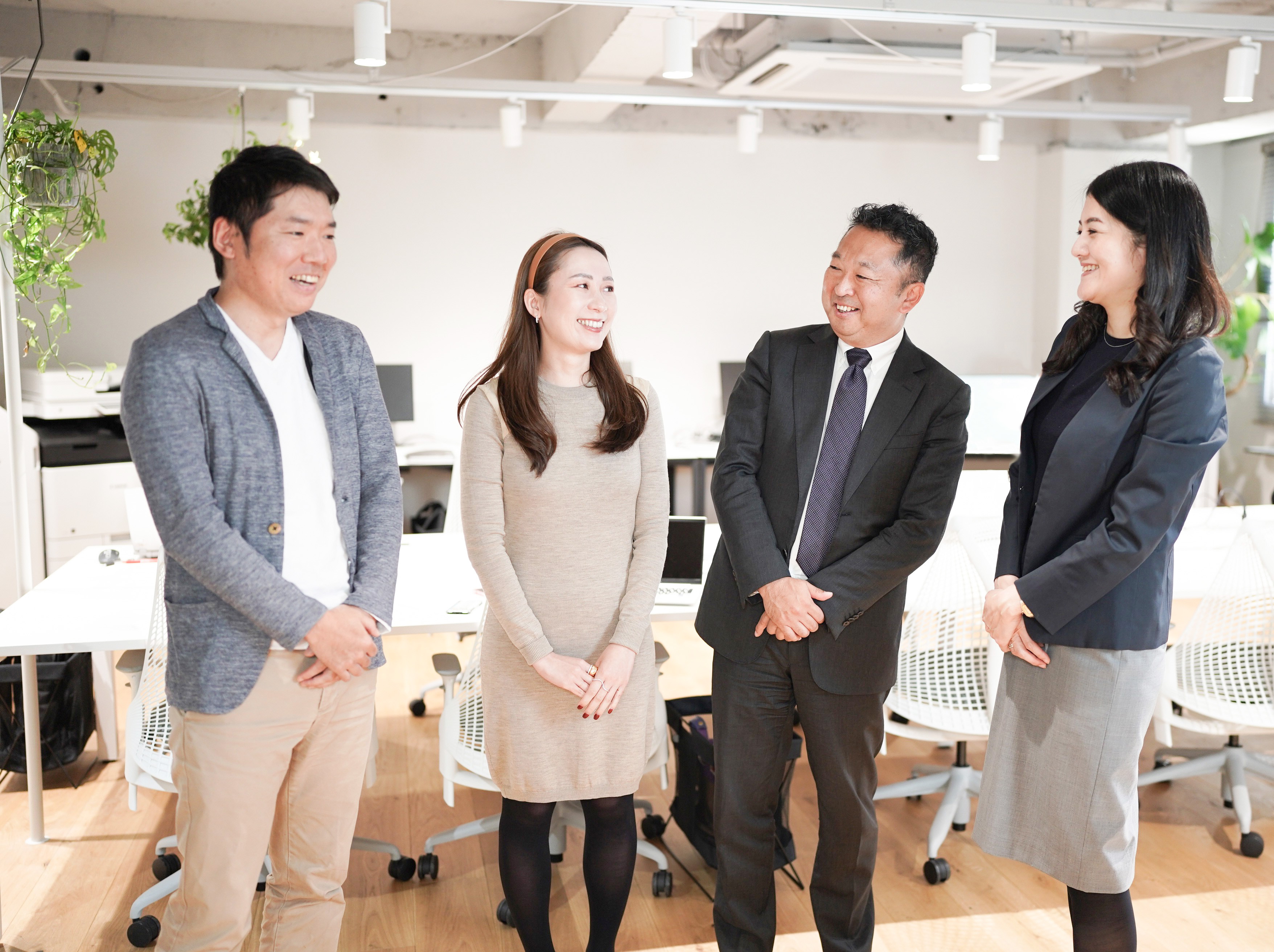
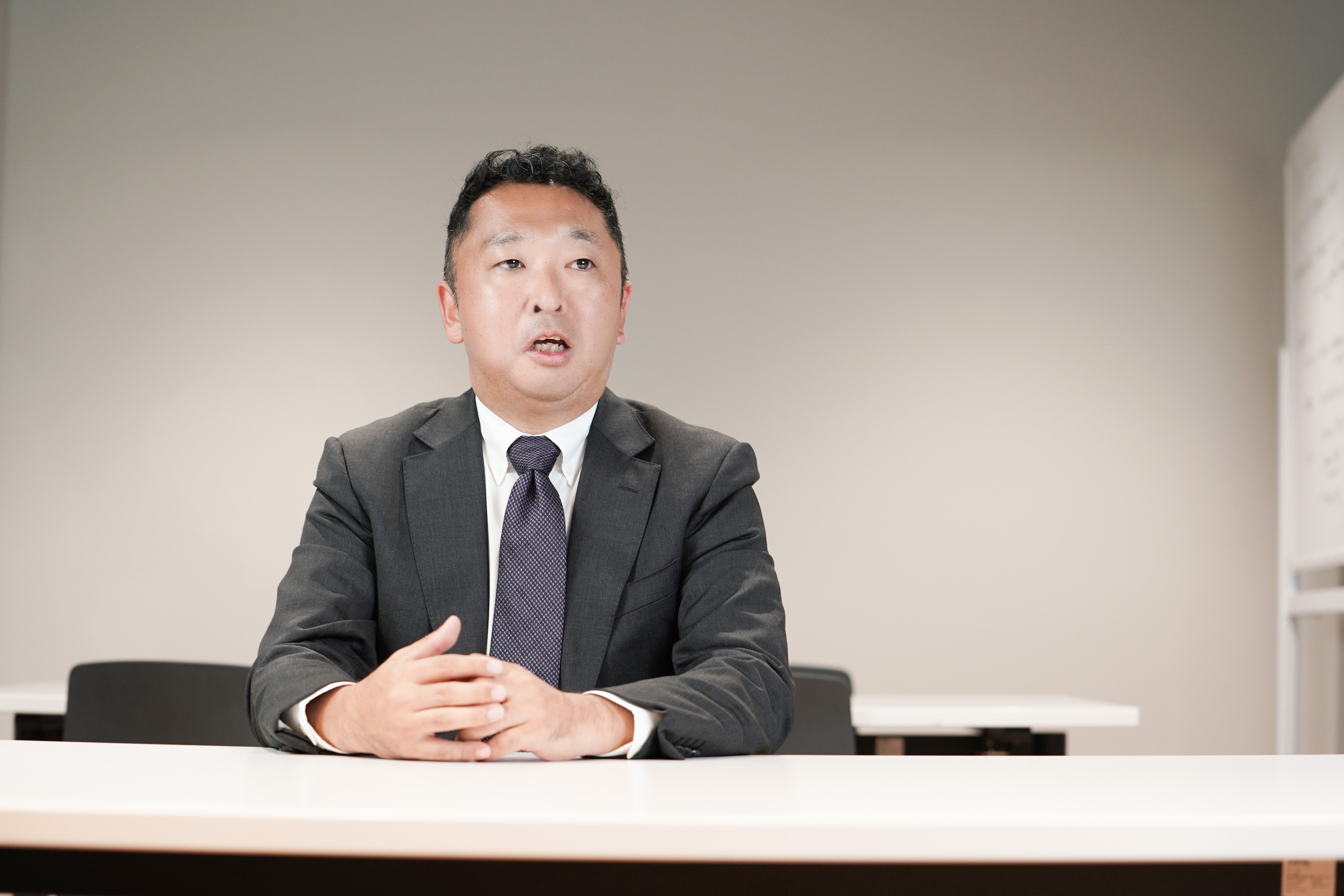
I had only been with Sumitomo Corporation for about half a year when we started to get Hakobune off the ground. As I was unfamiliar with all the rules and etiquette unique to the company, it was the professionalism of my colleagues which supported me and found ways to help me give shape to my thoughts. The collaborative effort among concerned parties enabled us to found this company through trial and error with unprecedented speed and driving force.
I would especially highlight the can-do spirit enabling far-reaching commitment and capability for action, dual qualities characterizing Sumitomo Corporation employees—a true corporate treasure. We were fortunate to have an organic assembly of like-minded individuals transcending corporate divisions who served as a valuable resource in helping our ideas get off the ground. I feel lucky to be a part of a company as dynamic as Sumitomo Corporation.
Clarifying Your Beliefs and Ambitions Is Key
What do you strive to keep in mind as you work?
I consciously try to see things from various angles.
Since we are only given one life to live, it is better to live it positively and enjoyably. I rarely use the word “failure” as I have experienced no loss or defeat. If I had to characterize such outcomes, I would say they were “unsuccessful.” These unsuccessful experiences offered me the opportunity to try again, learn, and ultimately prevail with persistence. That philosophy affords mental stability and the ability to view tougher challenges as enjoyable. The key is to give it all you’ve got. Doing so will enhance and increase your experience and knowledge. It is important to ask yourself — and clarify — what your goal is, to have the tools necessary to pursue it, and to be proud of the path you have chosen. Failing to do that will, I suspect, bring more unhappiness than joy in your daily work.
I also feel gratitude toward my colleagues and family for supporting my effort to create an environment in which I can work freely.
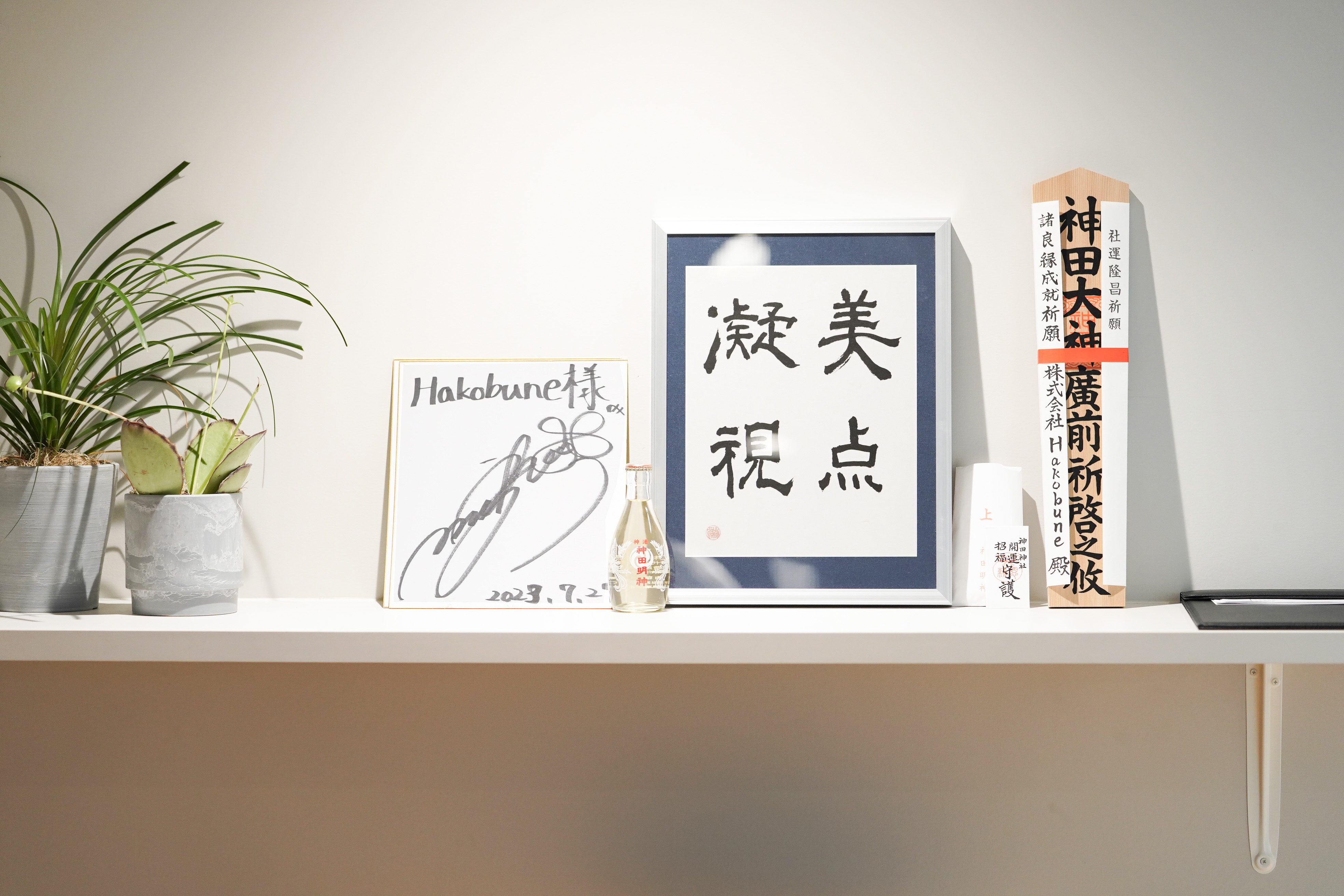
Finally, how do you view future business prospects?
I hope to leverage the expertise we gained during this initial year, strengthening our sales efforts to expand Hakobune’s services to as many new clients as possible. I would like to see companies throughout Japan, the US, Europe, and Asia feature a lineup of electric vehicles, with “Hakobune” eventually becoming synonymous with the term “EV.”
Meanwhile, we also plan to strengthen our posture for competitive business by focusing on client and market needs and being responsive to mobility requirements.
A key point is that, while mobility is essential in all lifestyles, it is not the only factor that matters in life. We see Hakobune evolving into a more fruitful service, designing seamless user experiences (UX) using digital technology in every aspect of daily life, be it before, after, or while we are in transit.
We anticipate maintaining our Japan model as the base, expanding overseas with speed and scale in mind. Please keep us in your sights!

